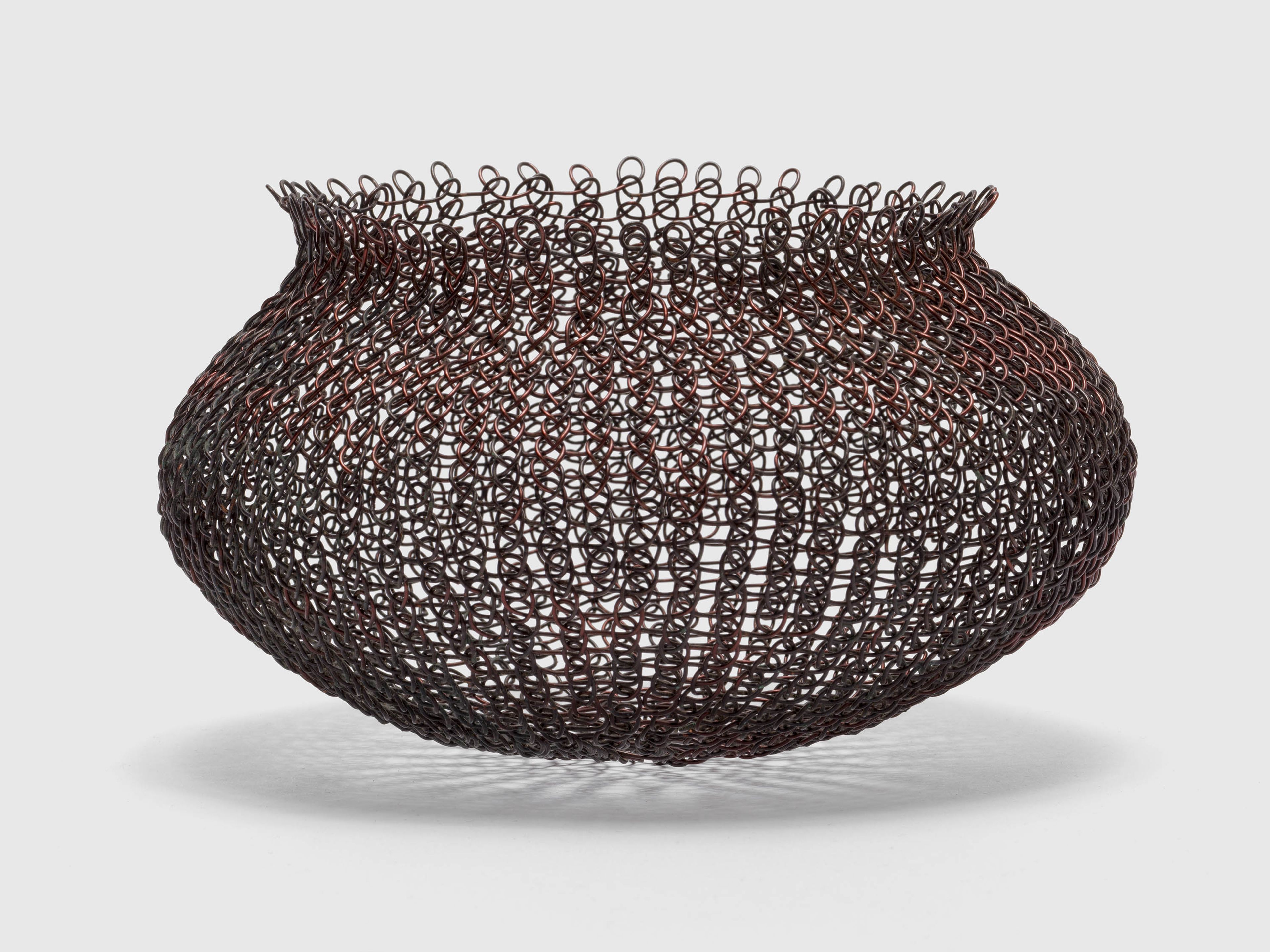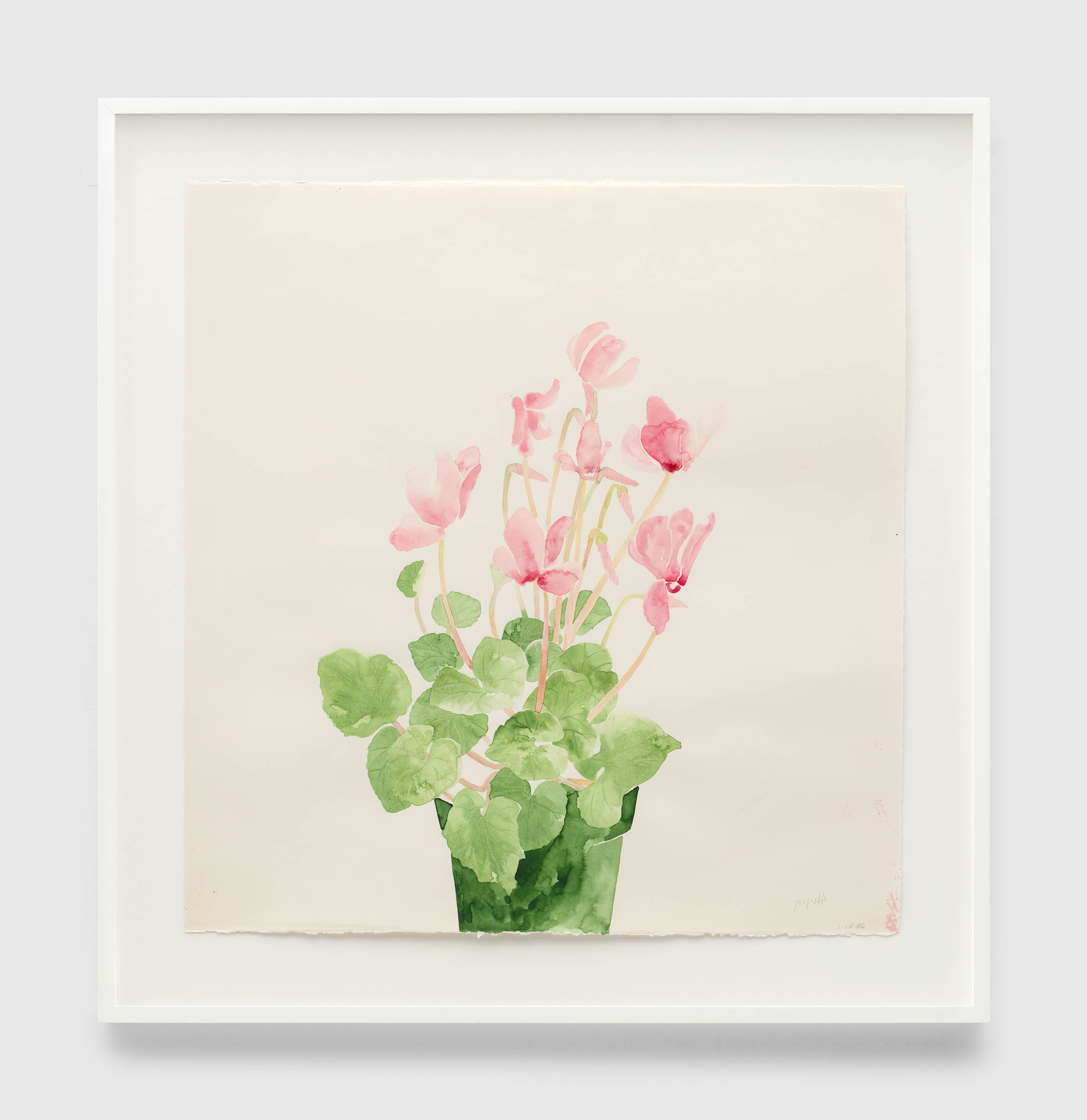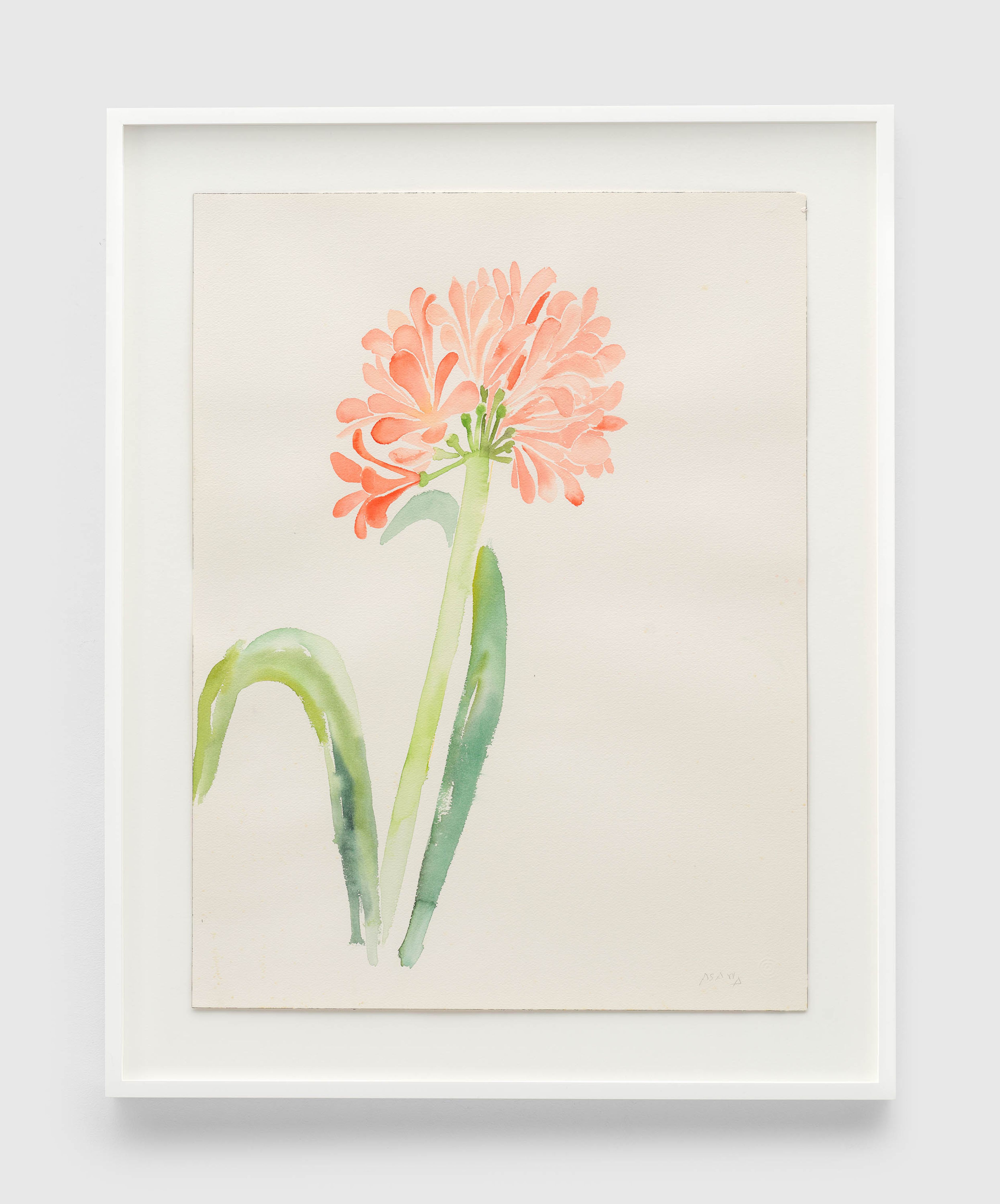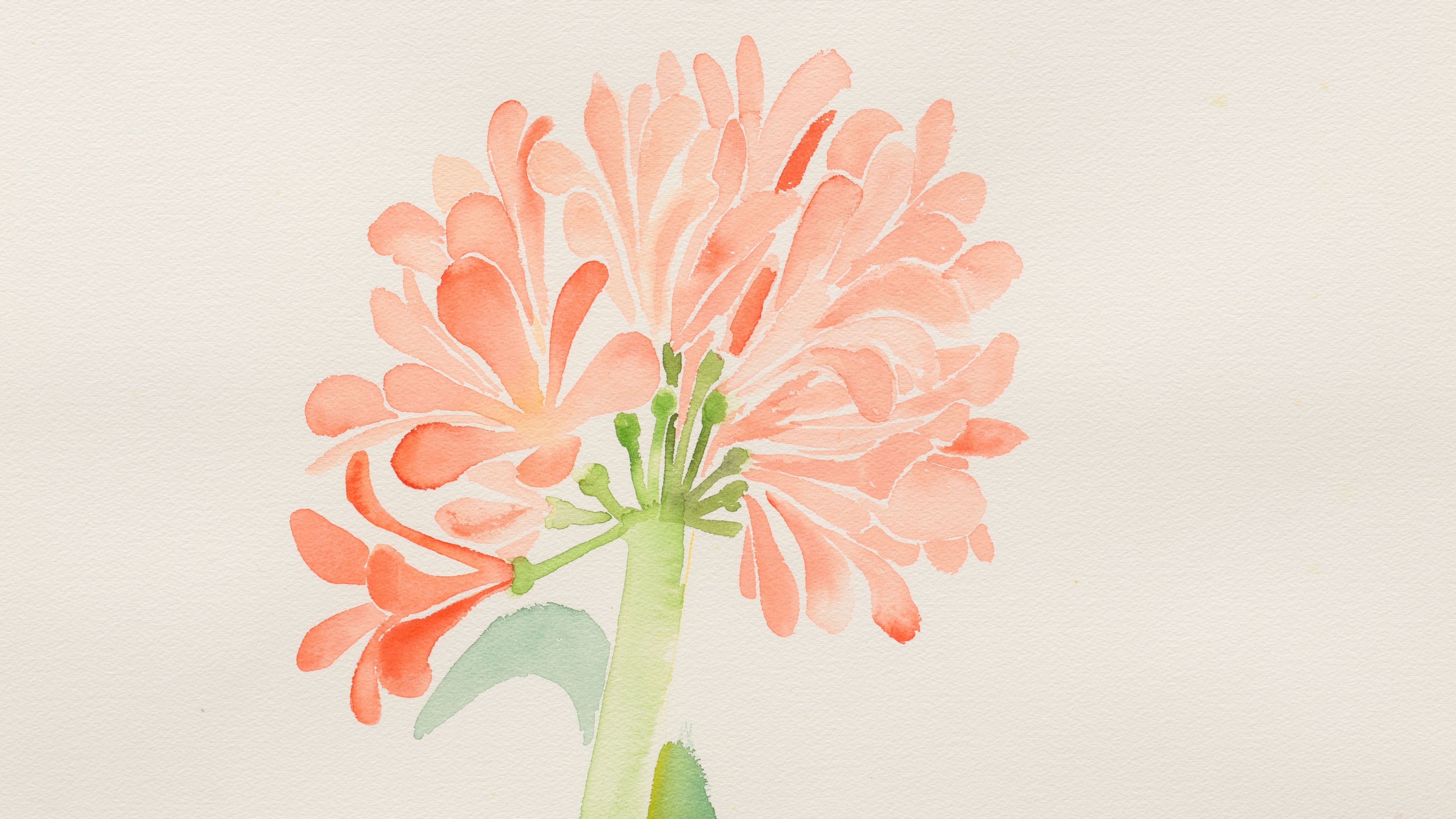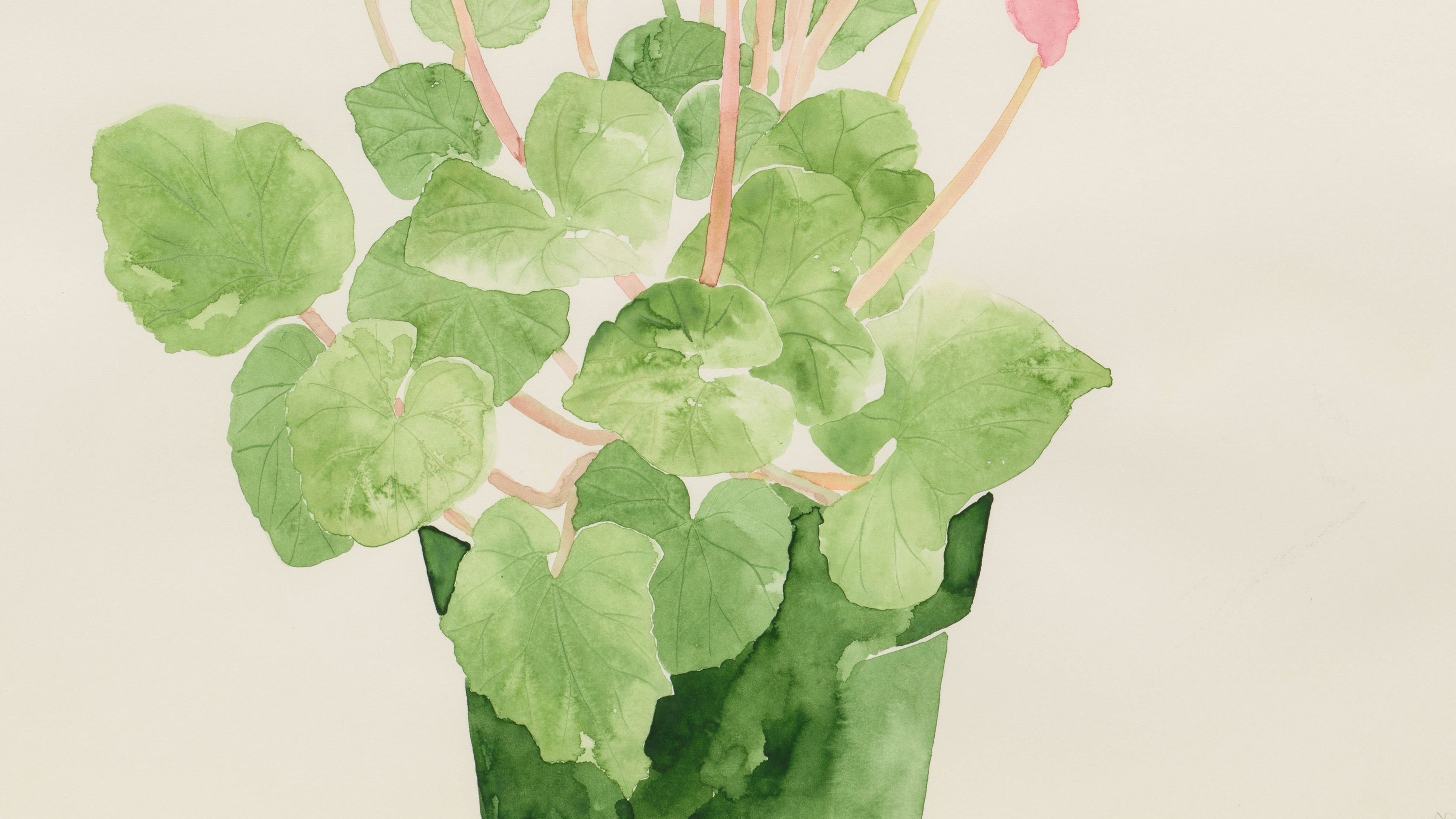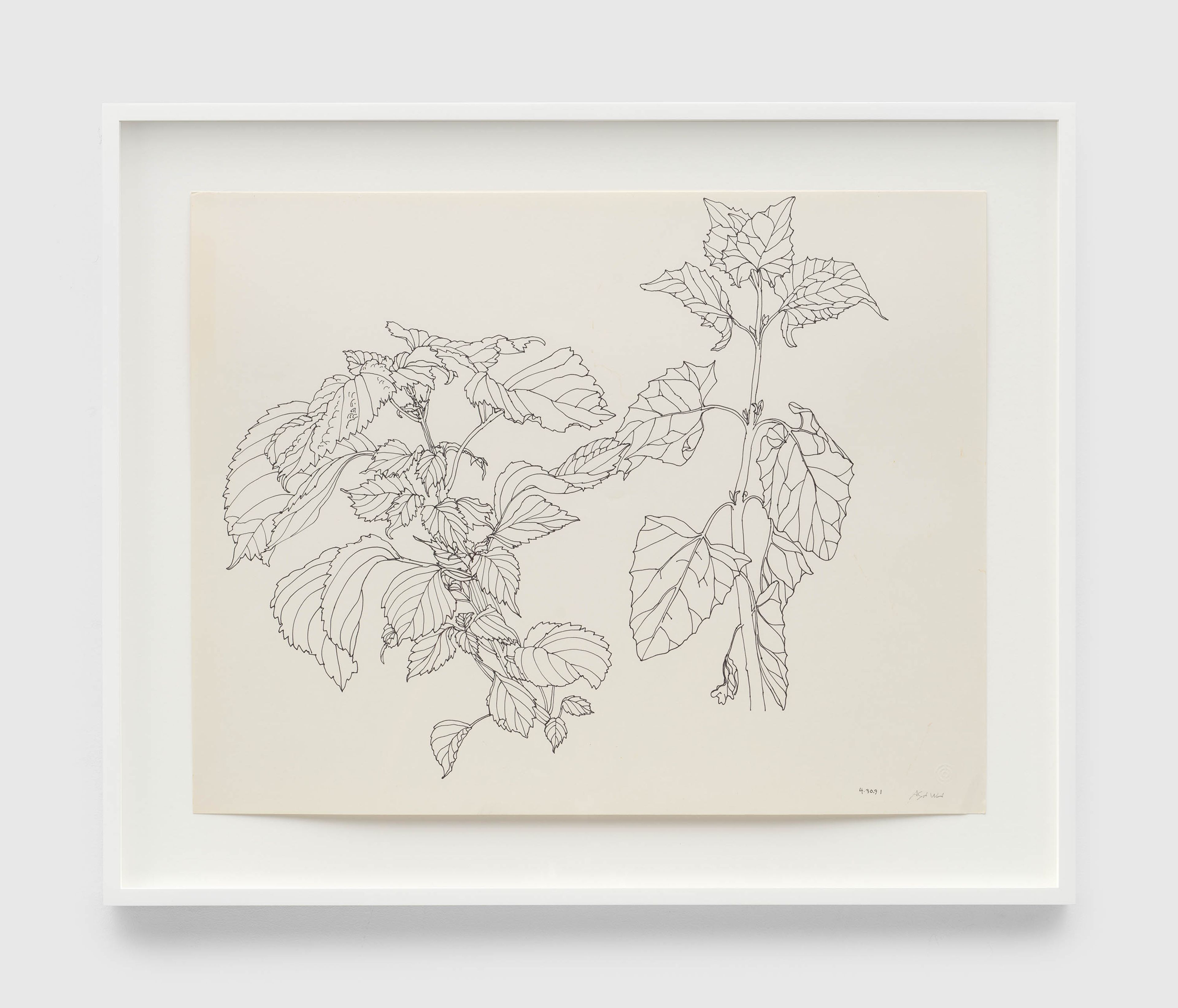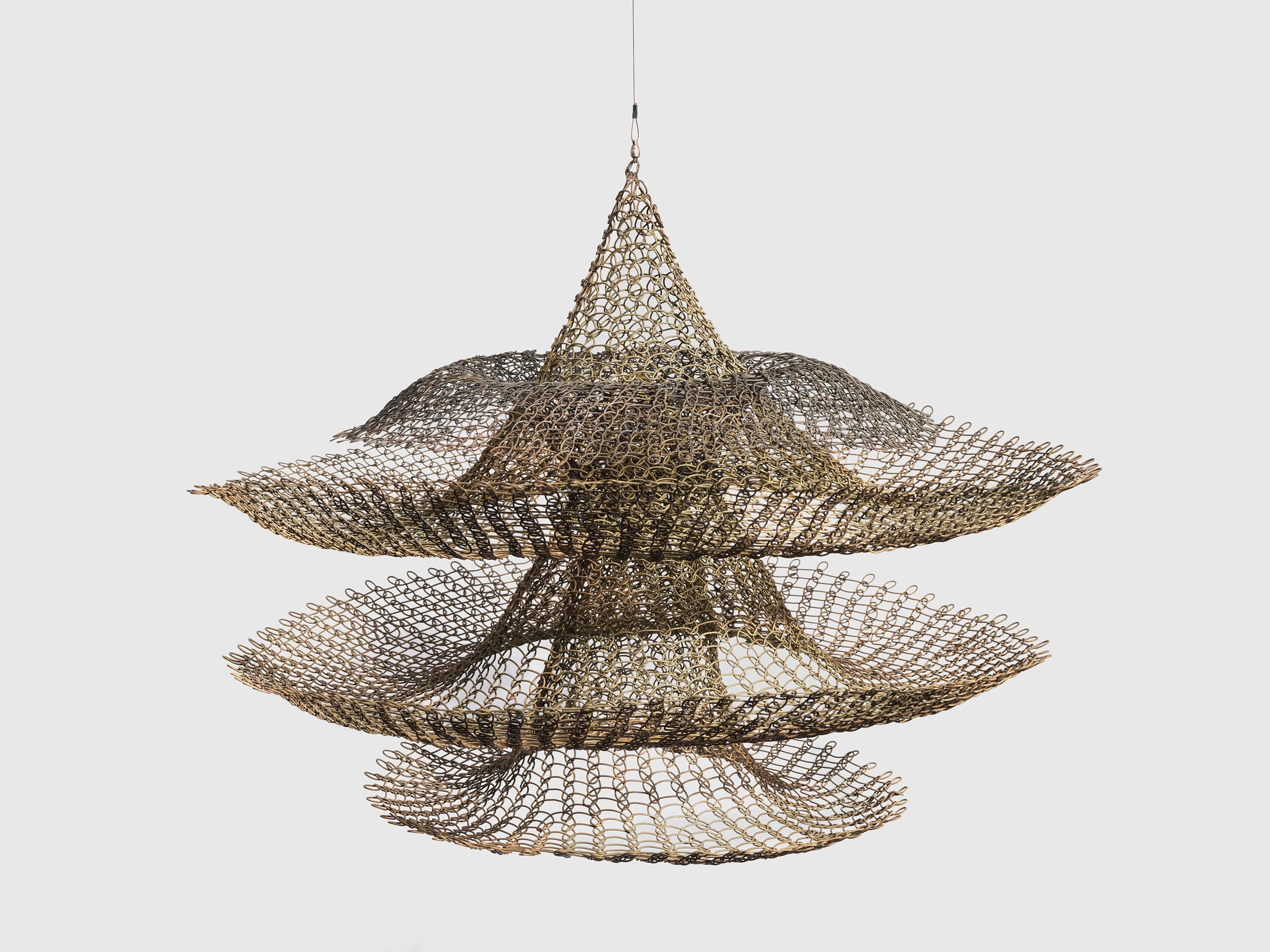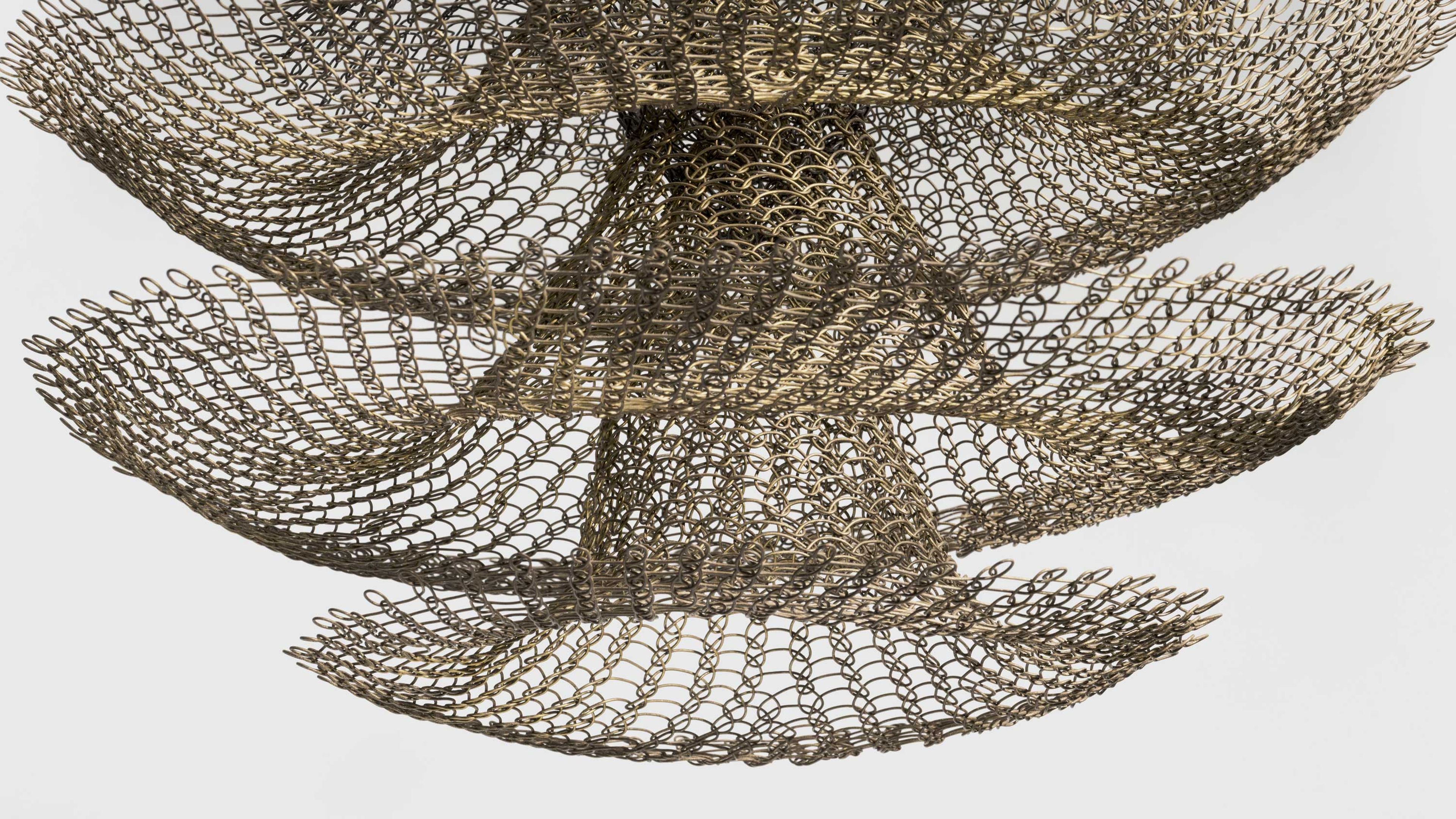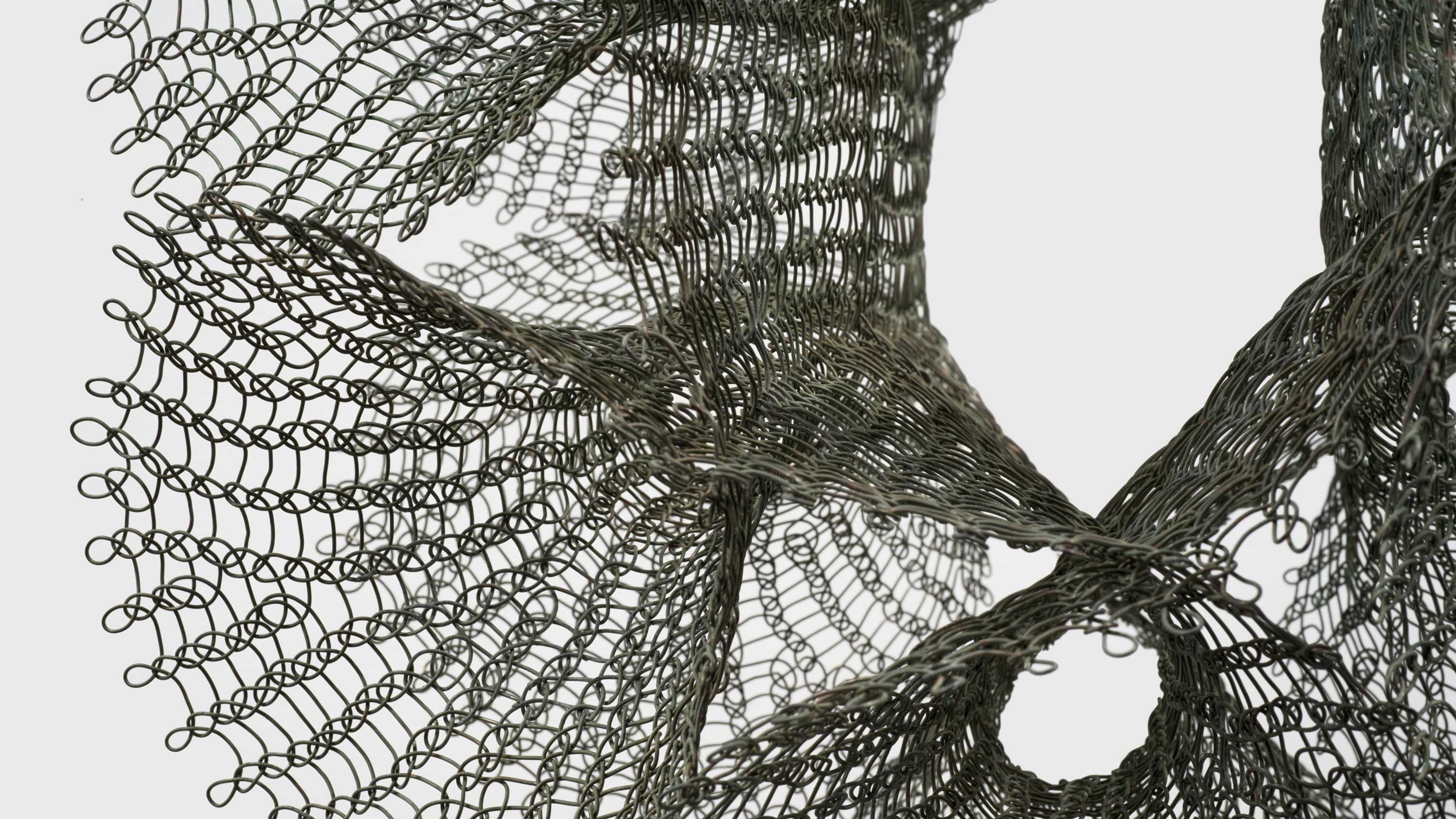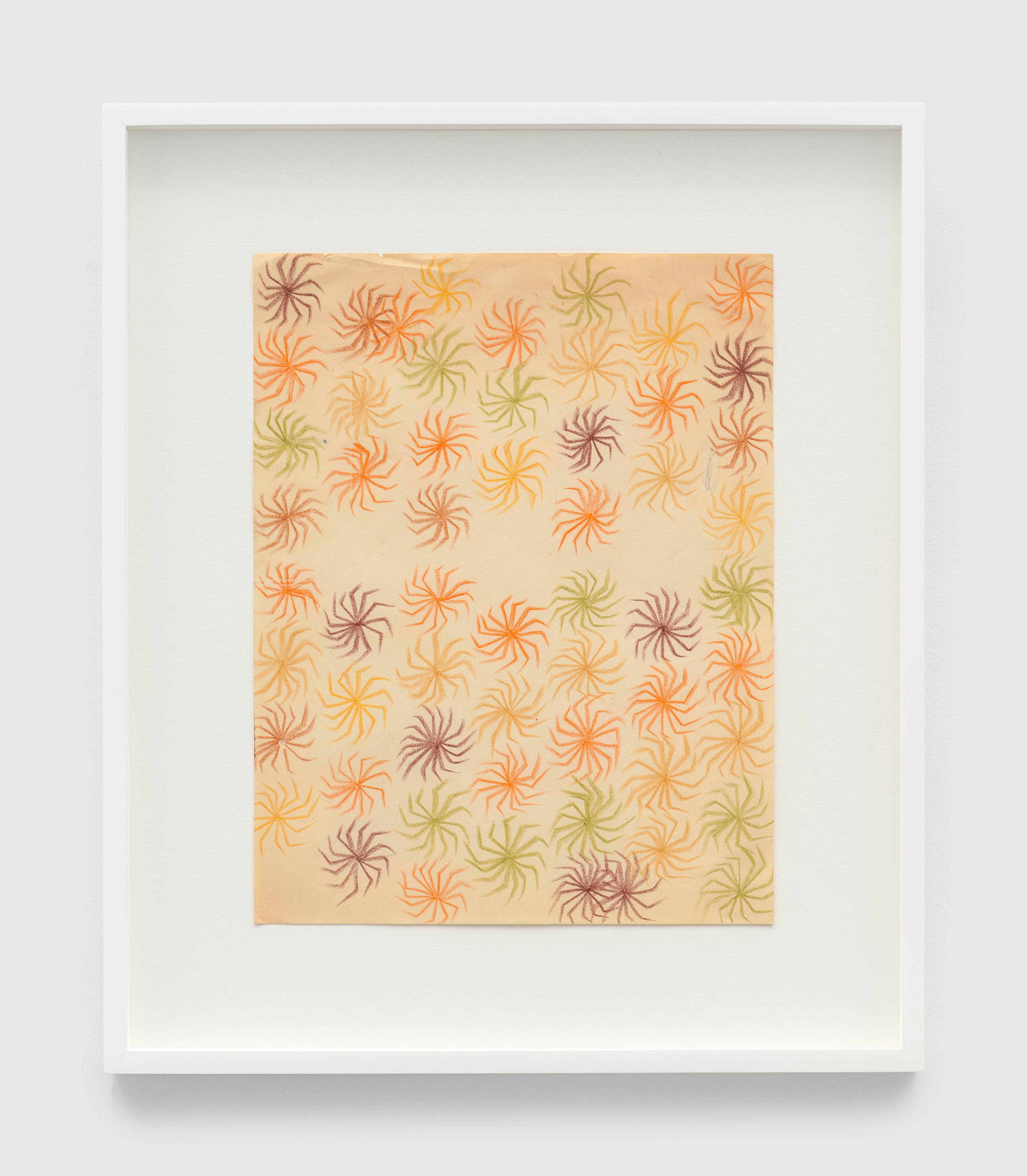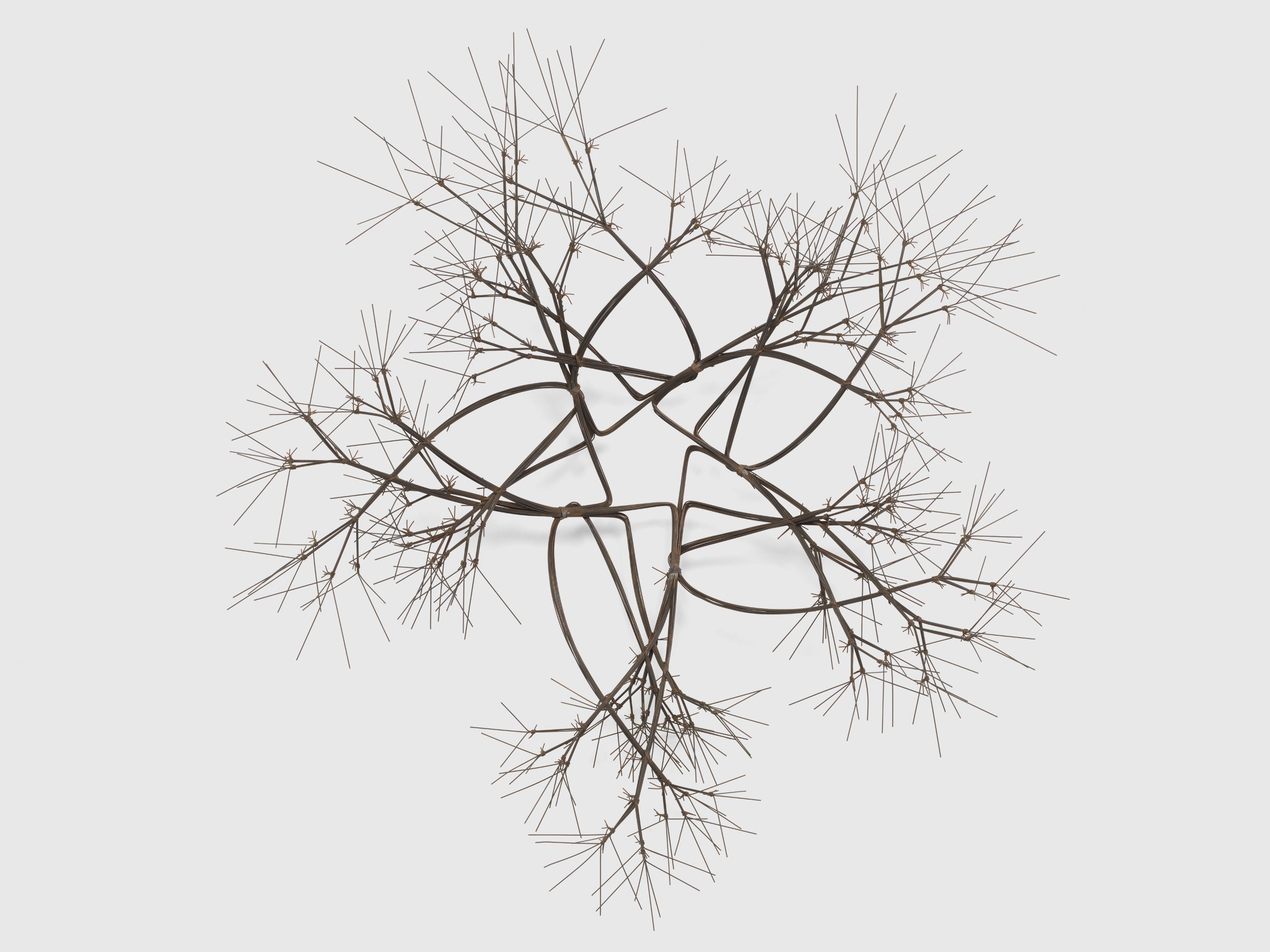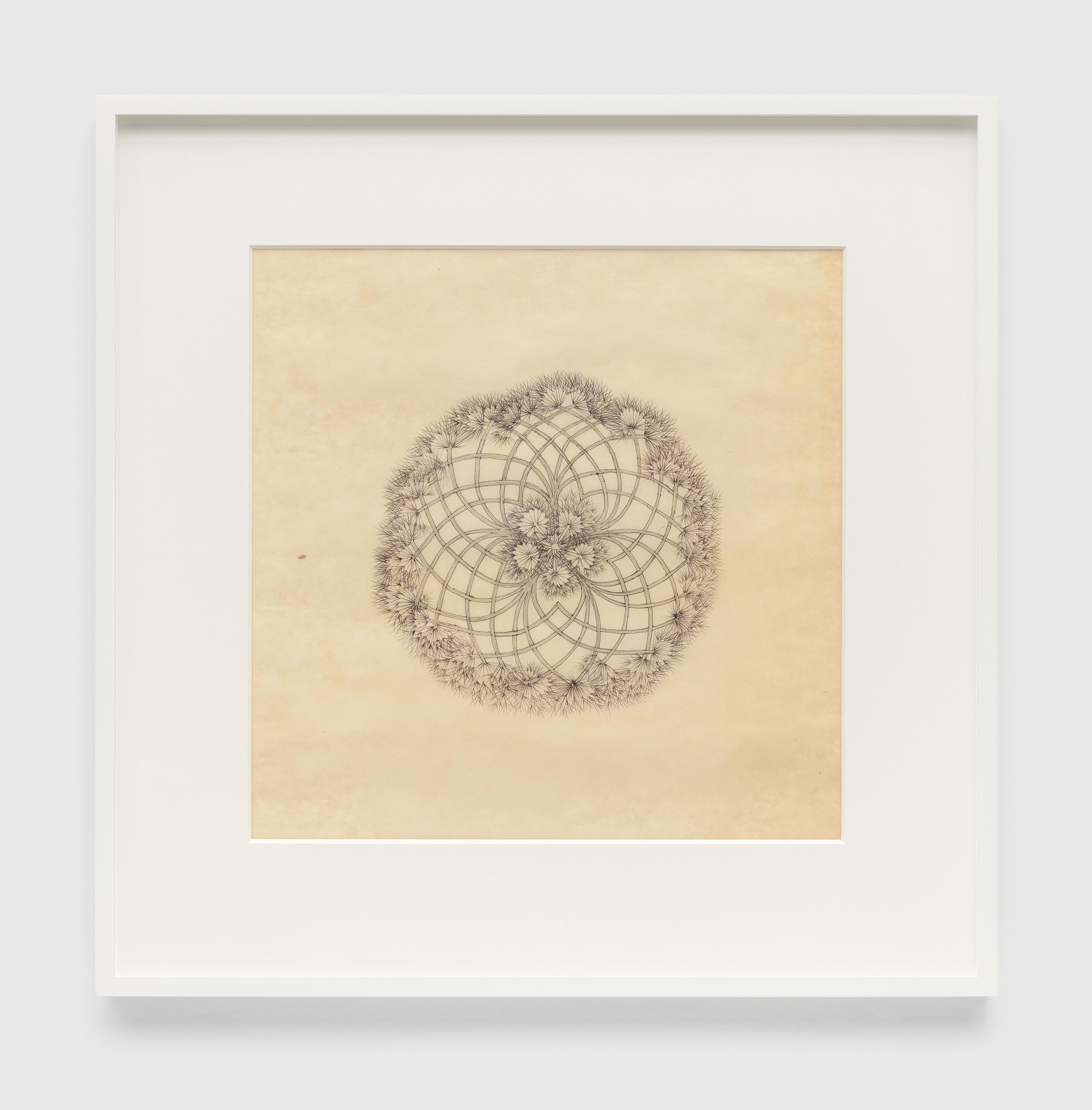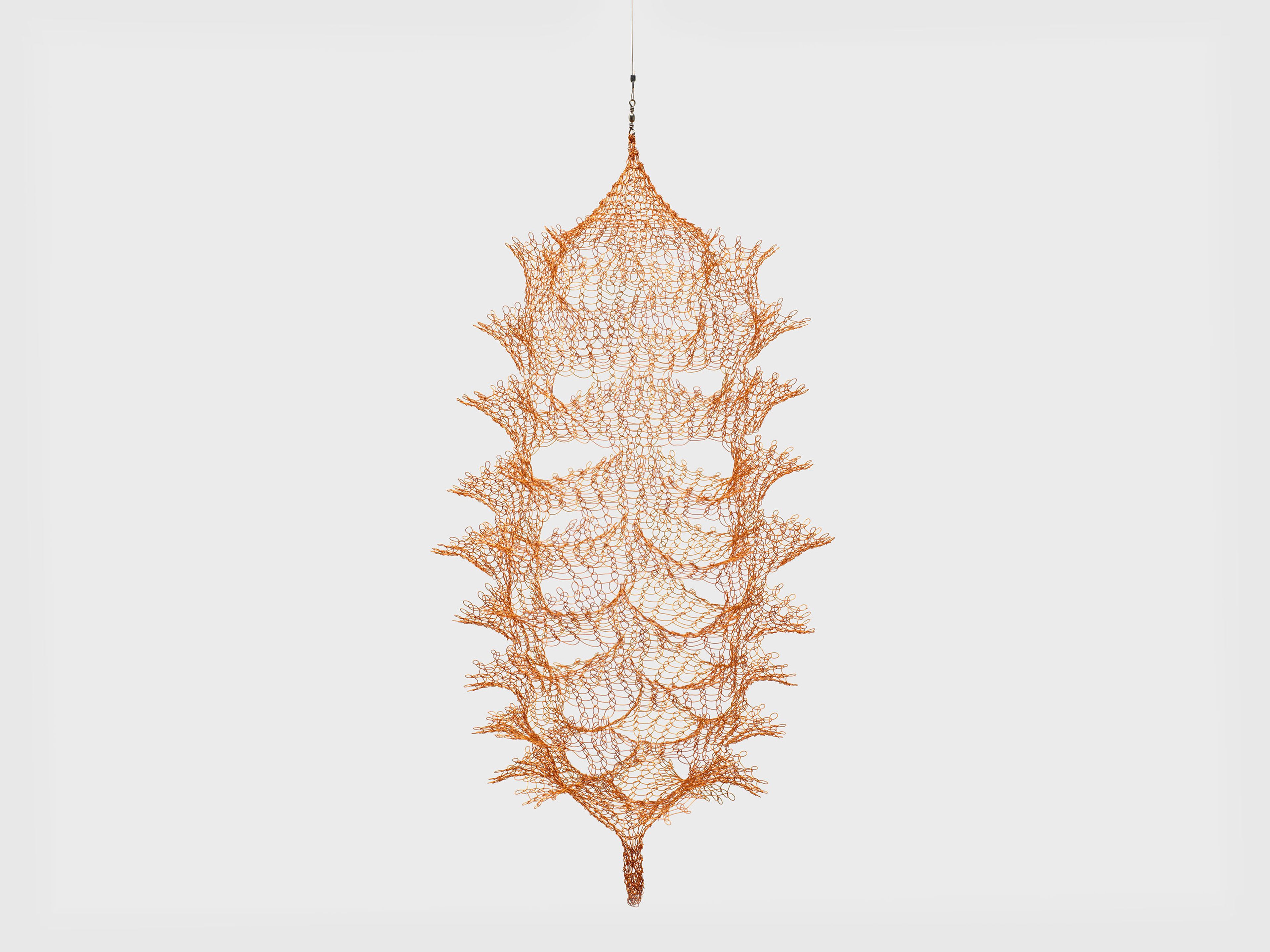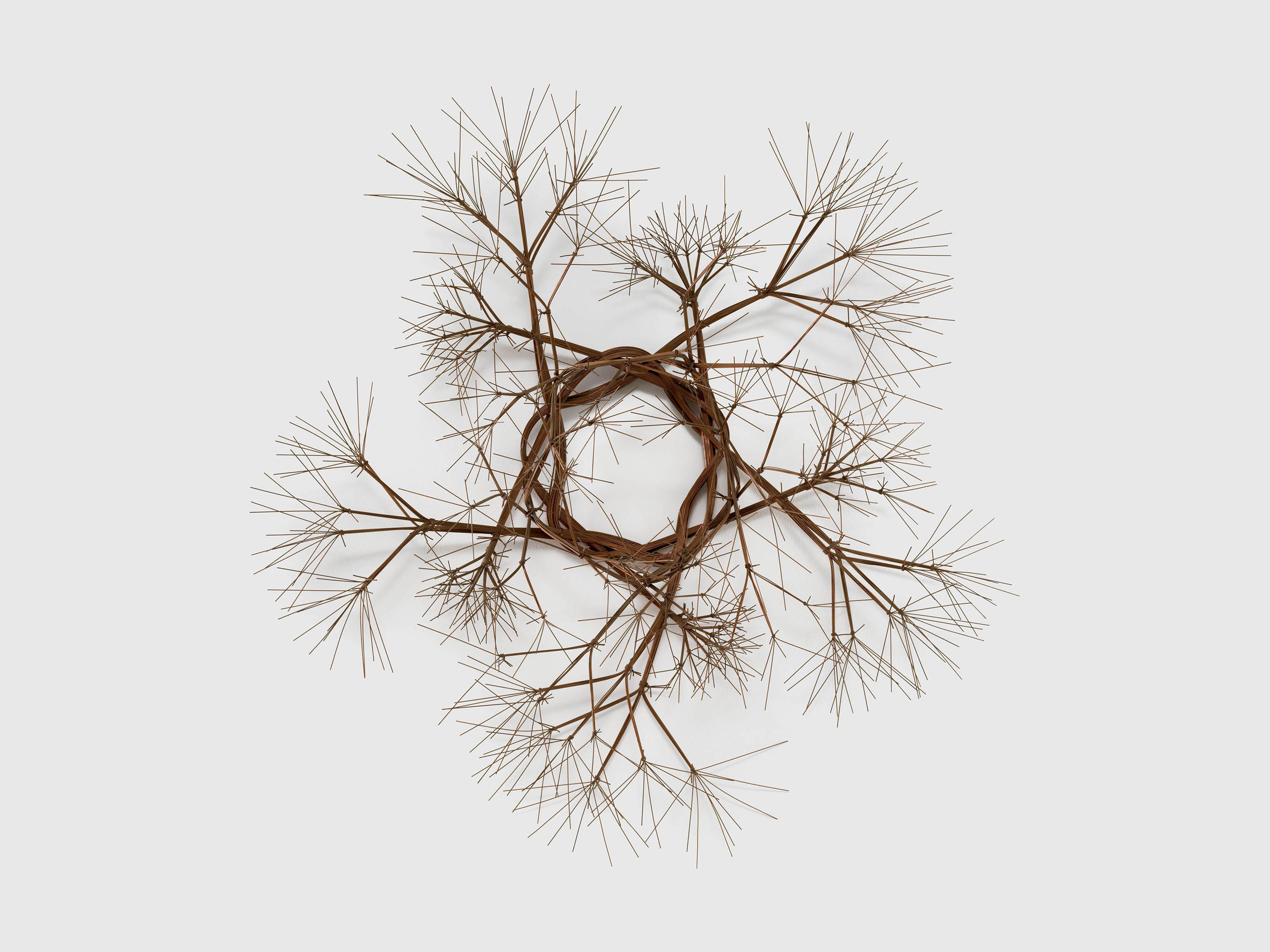Ruth Asawa: Doing Is Living
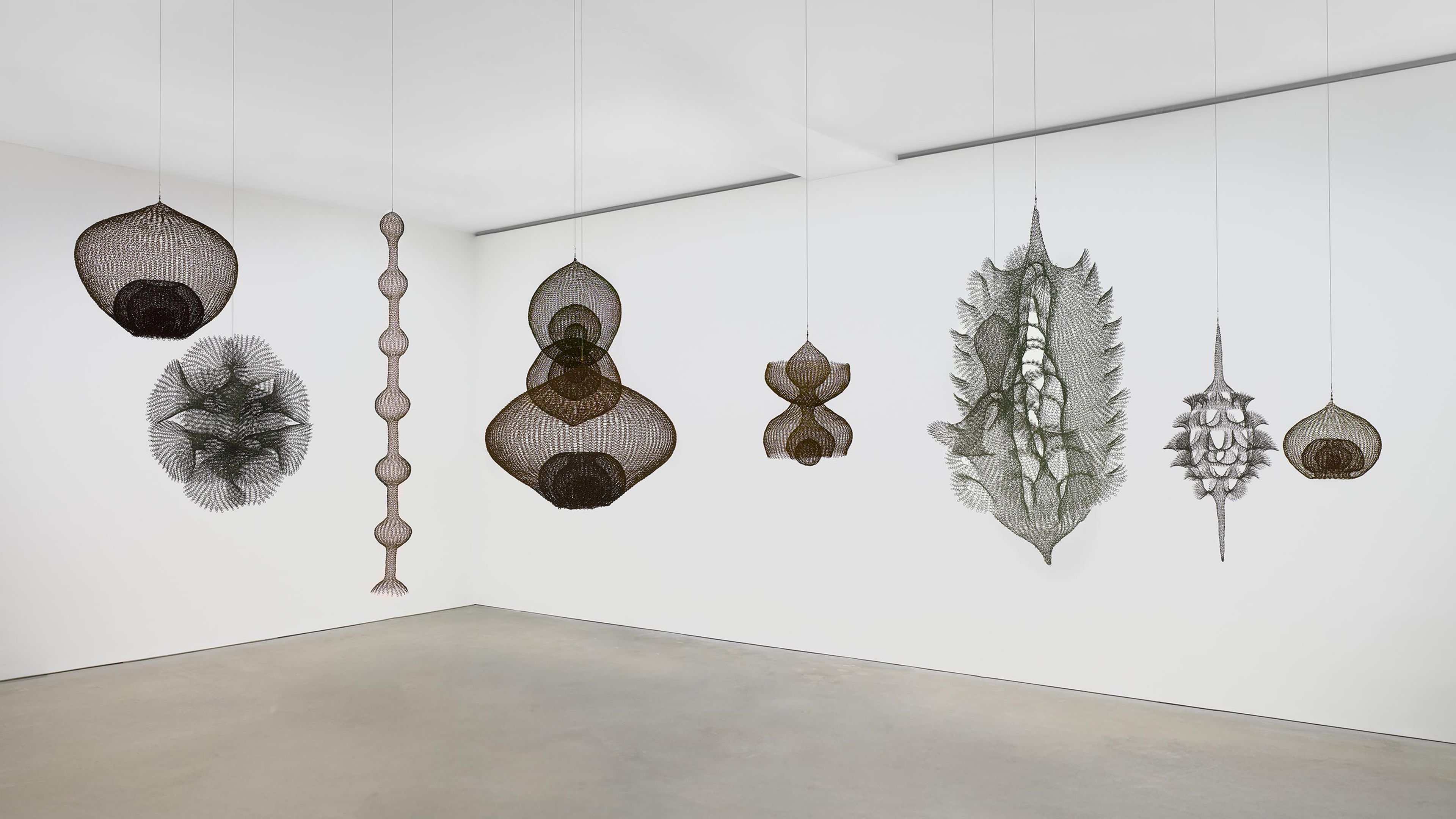
Installation view, Ruth Asawa: Doing Is Living, David Zwirner, Hong Kong, 2024–2025. Artworks © 2024 Ruth Asawa Lanier, Inc./Artists Rights Society (ARS), New York
Past
November 19, 2024—February 22, 2025
Opening Reception
Tuesday, November 19, 5–7 PM
Opening Reception
Tuesday, November 19, 5–7 PM
Location
Hong Kong
5–6/F, H Queen’s, 80 Queen’s Road Central
Hong Kong
Tue, Wed, Thu, Fri, Sat: 11 AM-7 PM
Artist
Explore
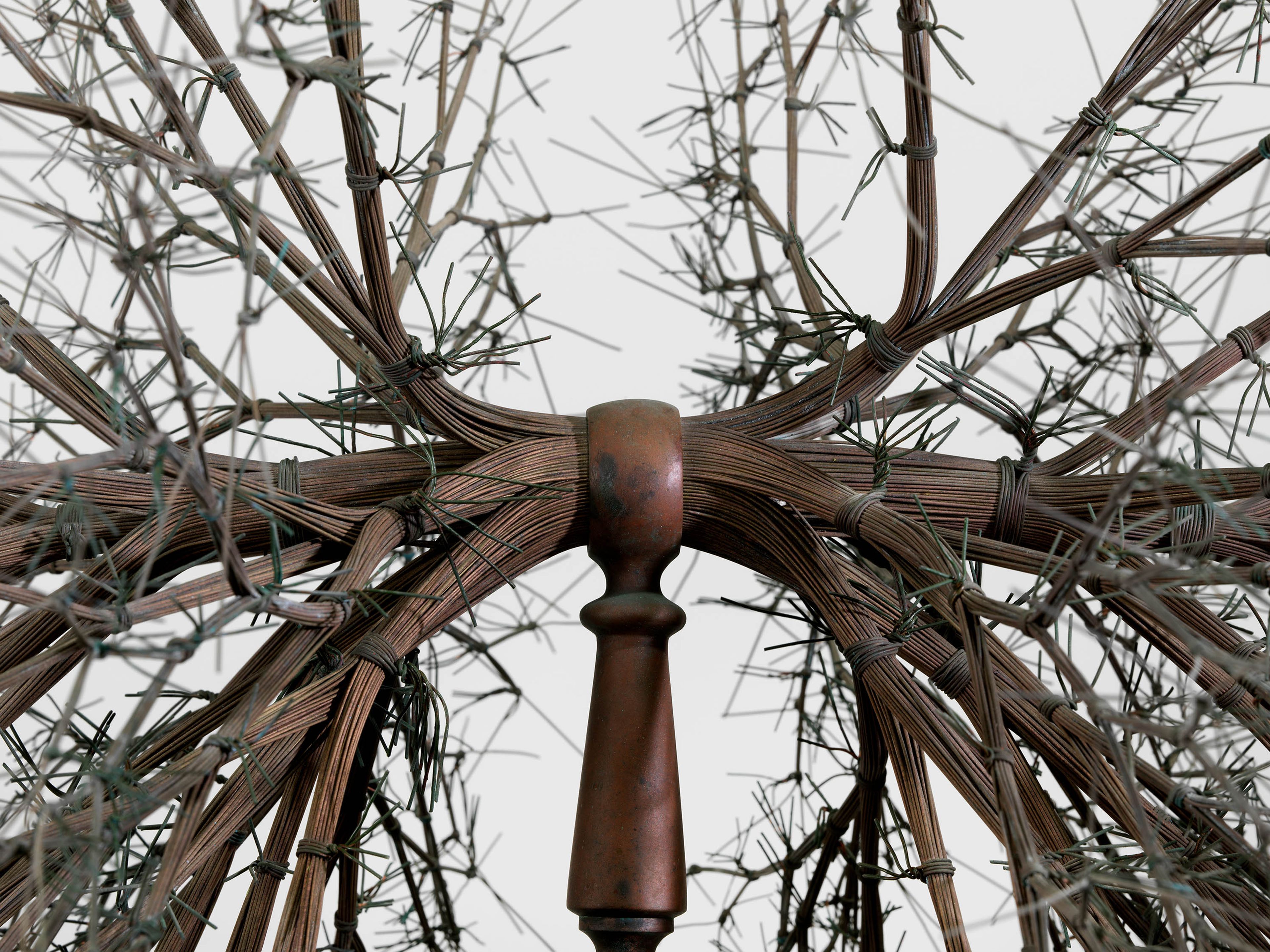
Ruth Asawa: Doing Is Living
“As a good gardener must know his plants, so an art teacher must know his craft. I am primarily concerned with art and art education because I have devoted most of my life to the study and practice of art. I have made doing it part of my life.... Doing is living. That is all that matters.”
—Ruth Asawa
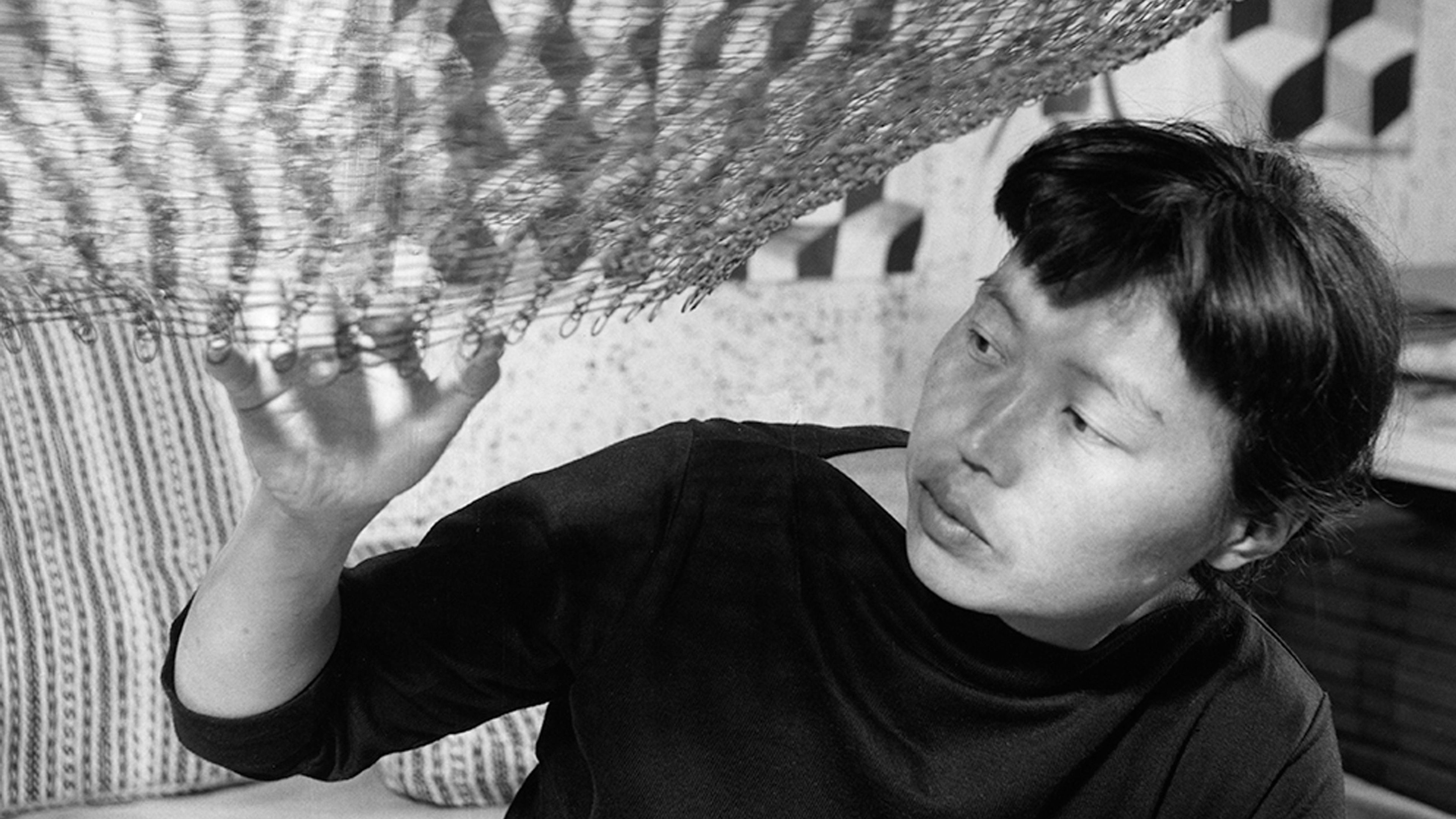
Ruth Asawa, 1957. Photograph © Imogen Cunningham Trust. Artwork © 2024 Ruth Asawa Lanier, Inc./Artists Rights Society (ARS), New York
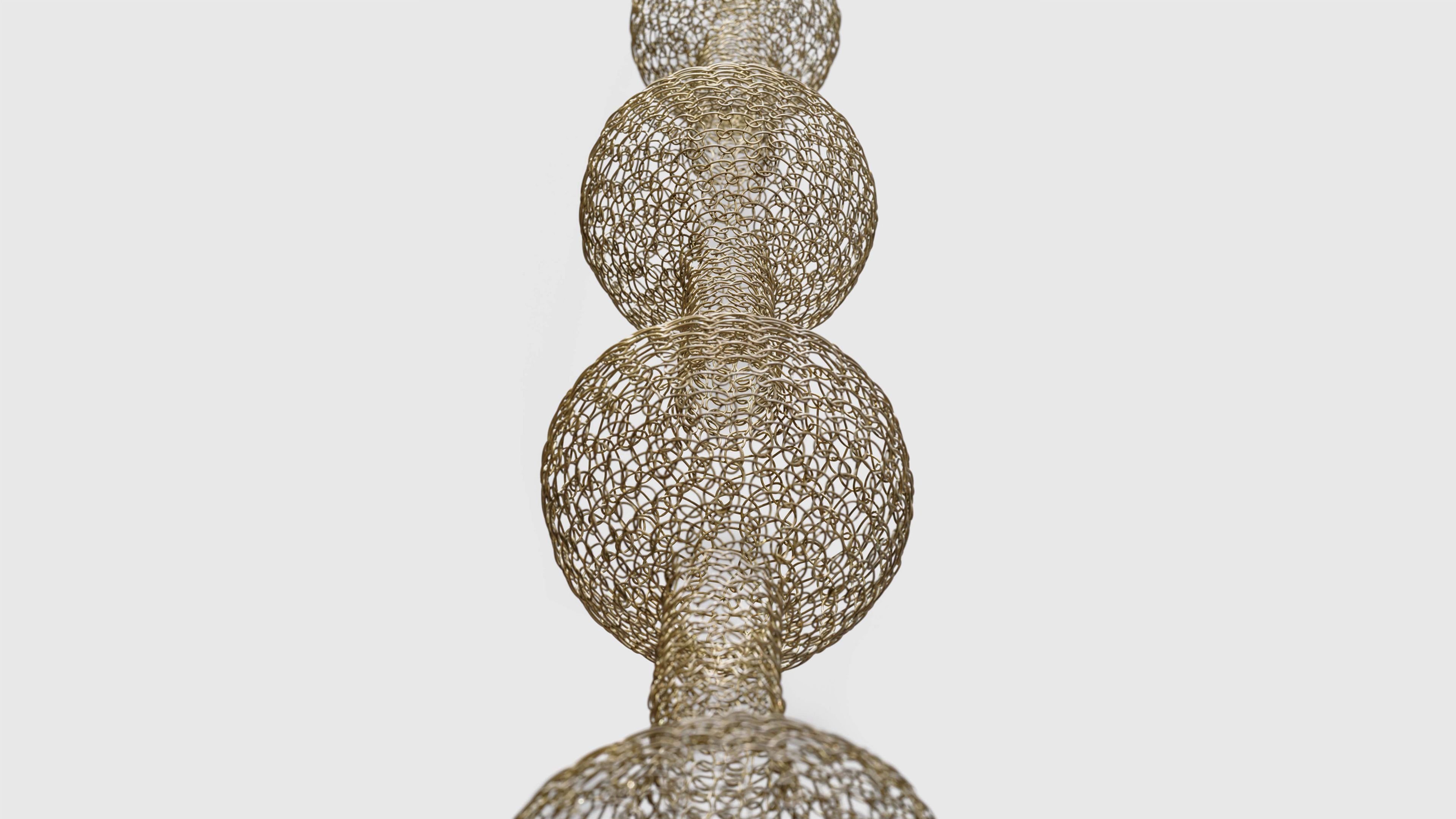
Ruth Asawa, Untitled (S.737, Hanging Six-Lobed Continuous Form), c. 1957-1969 (detail). © 2024 Ruth Asawa Lanier, Inc./Artists Rights Society (ARS), New York
“It was Josef Albers ... who had the biggest influence on Asawa.... He advised his students [at Black Mountain] to leave all stylistic prejudices behind, learning to see forms and materials in a fresh, authentic way.... And he encouraged the use of simple materials like paper, string, wire, leaves, or twigs—whatever was available—and taught them to allow the material to express itself.”
—Tiffany Bell, curator, in her 2018 essay “Ruth Asawa: Working from Nothing”
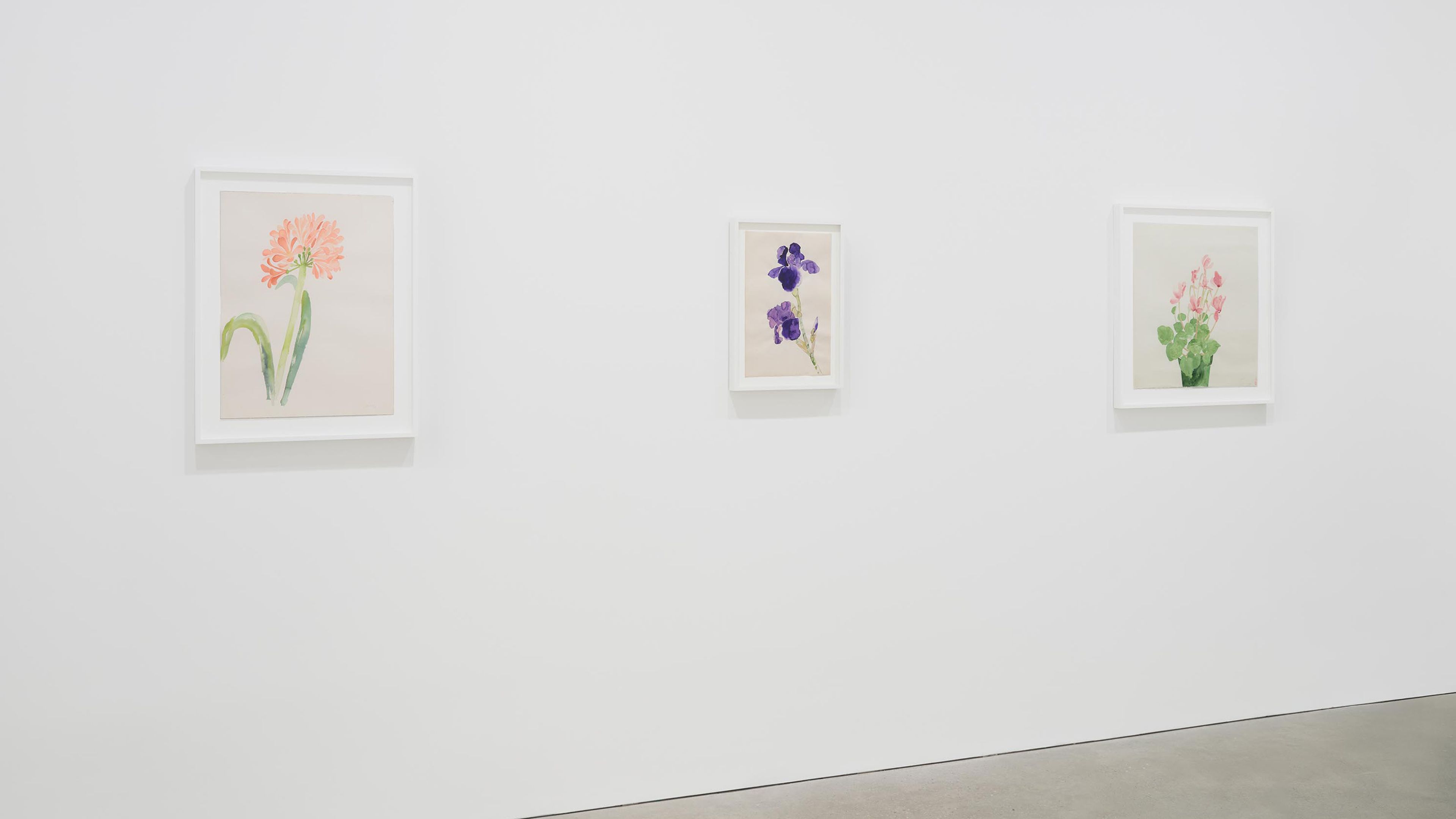
Installation view, Ruth Asawa: Doing Is Living, David Zwirner, Hong Kong, 2024–2025. Artworks © 2024 Ruth Asawa Lanier, Inc./Artists Rights Society (ARS), New York
“These forms come from observing plants, the spiral shell of a snail, seeing light through insect wings, watching spiders repair their webs in the early morning, and seeing the sun through the droplets of water suspended from the tips of pine needles while watering my garden.”
—Ruth Asawa

Ruth Asawa watering her vegetable garden at her Noe Valley home, c. 1976. Photo © Philip Chan. Courtesy Ruth Asawa Lanier, Inc.
“In her hands, art became a process of continuous exploration and negotiation, not a means to an end. And drawing, as a daily practice, served as an active mode of seeing, recording, understanding, and participating in the world around her.”
—Kim Conaty, chief curator, Whitney Museum of American Art
An excerpt from Ruth Asawa: Of Forms and Growth, directed by Robert Snyder, 1978. © Masters and Masterworks Productions, Inc.
“Repetition was at the heart of the matter for Asawa.... Her early drawings offer repetition as both formal exploration and tactile pleasure, the DNA of what would become her most iconic works, the suspended crocheted-wire sculptures.”
—Helen Molesworth, curator
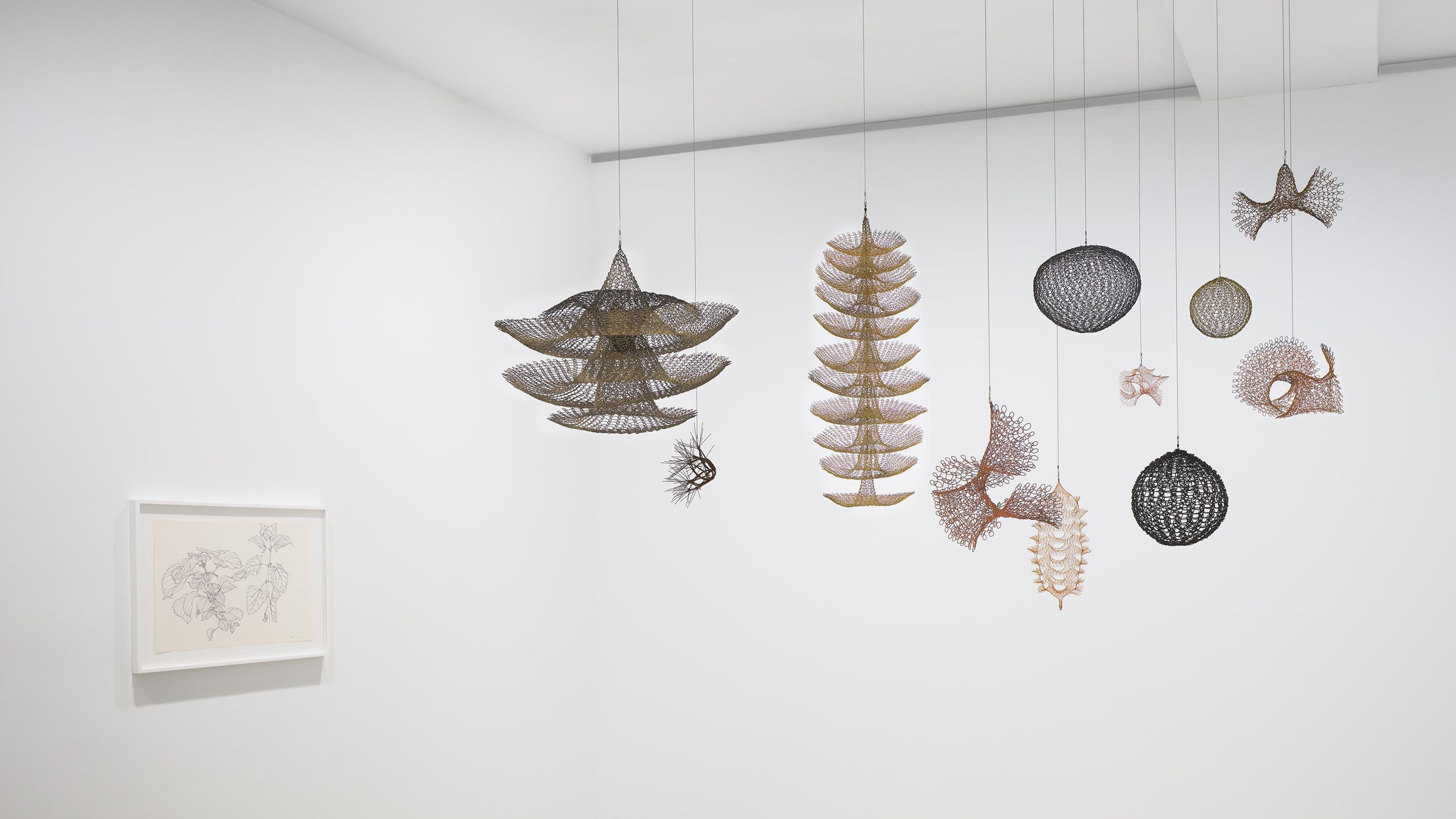
Installation view, Ruth Asawa: Doing Is Living, David Zwirner, Hong Kong, 2024–2025. Artworks © 2024 Ruth Asawa Lanier, Inc./Artists Rights Society (ARS), New York
“I state, without hesitation or reserve, that I consider Ruth Asawa to be the most gifted, productive, and originally inspired artist that I have ever known personally. That statement includes many of this century’s most celebrated ‘greats.’”
—Buckminster Fuller, architect, theorist, and inventor, in his 1971 letter of recommendation in support of Asawa’s application to the Guggenheim Foundation’s annual fellowship program
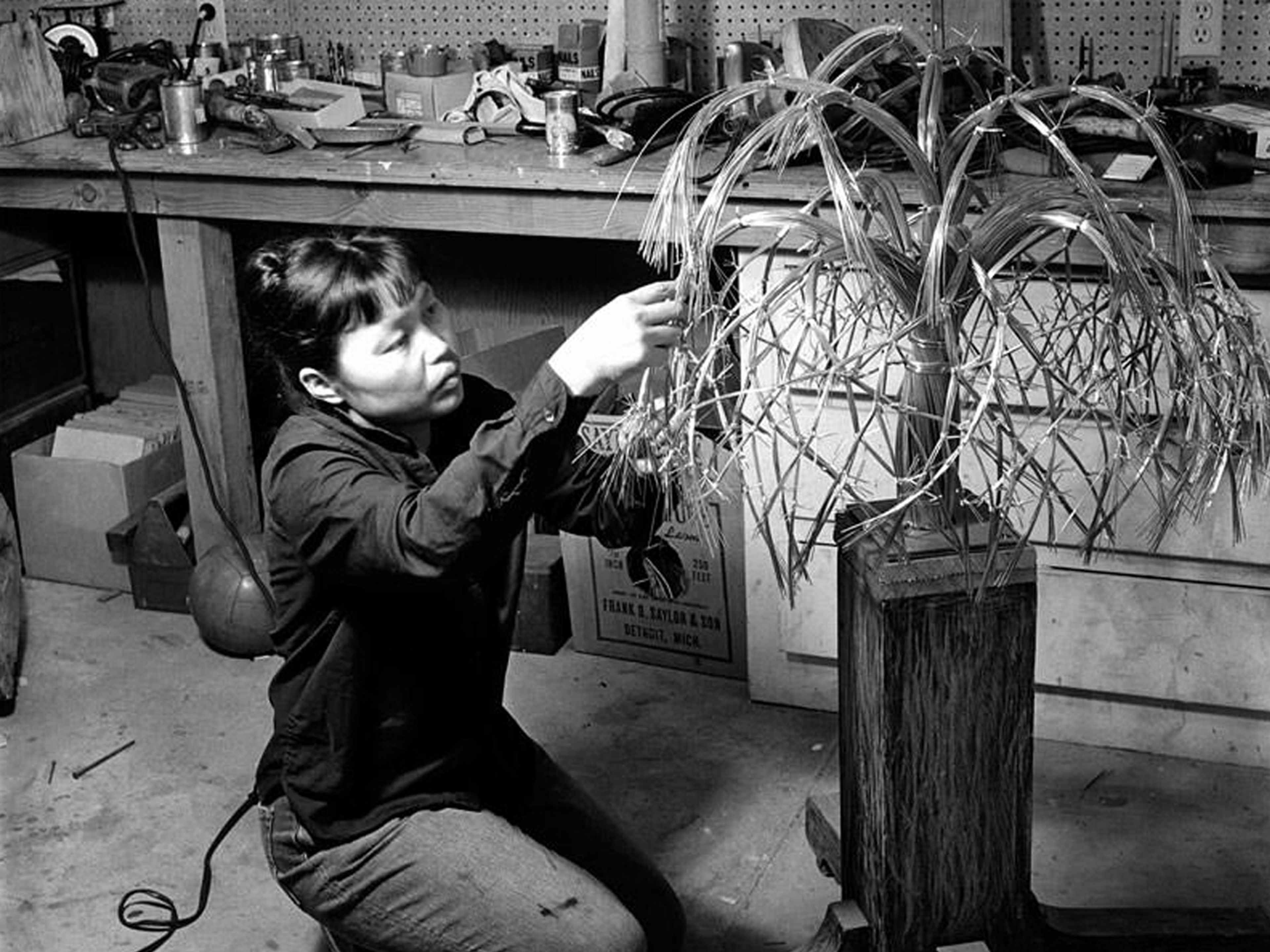
Ruth Asawa working on a tied-wire sculpture in her studio, 1963. Photograph © Imogen Cunningham Trust. Artwork © 2024 Ruth Asawa Lanier, Inc./Artists Rights Society (ARS), New York
Also on view in the exhibition are examples of Asawa’s iconic tied-wire sculptures, which she began making in 1962. Like many of the artist’s constructions, the series explores organic forms and processes: After having been gifted a desert plant whose branches split exponentially as they grew, Asawa quickly became frustrated by her attempts to replicate its structure in two dimensions. Instead, she utilized industrial wire as a means of mimicking the form through sculpture and, in doing so, studying its shape.
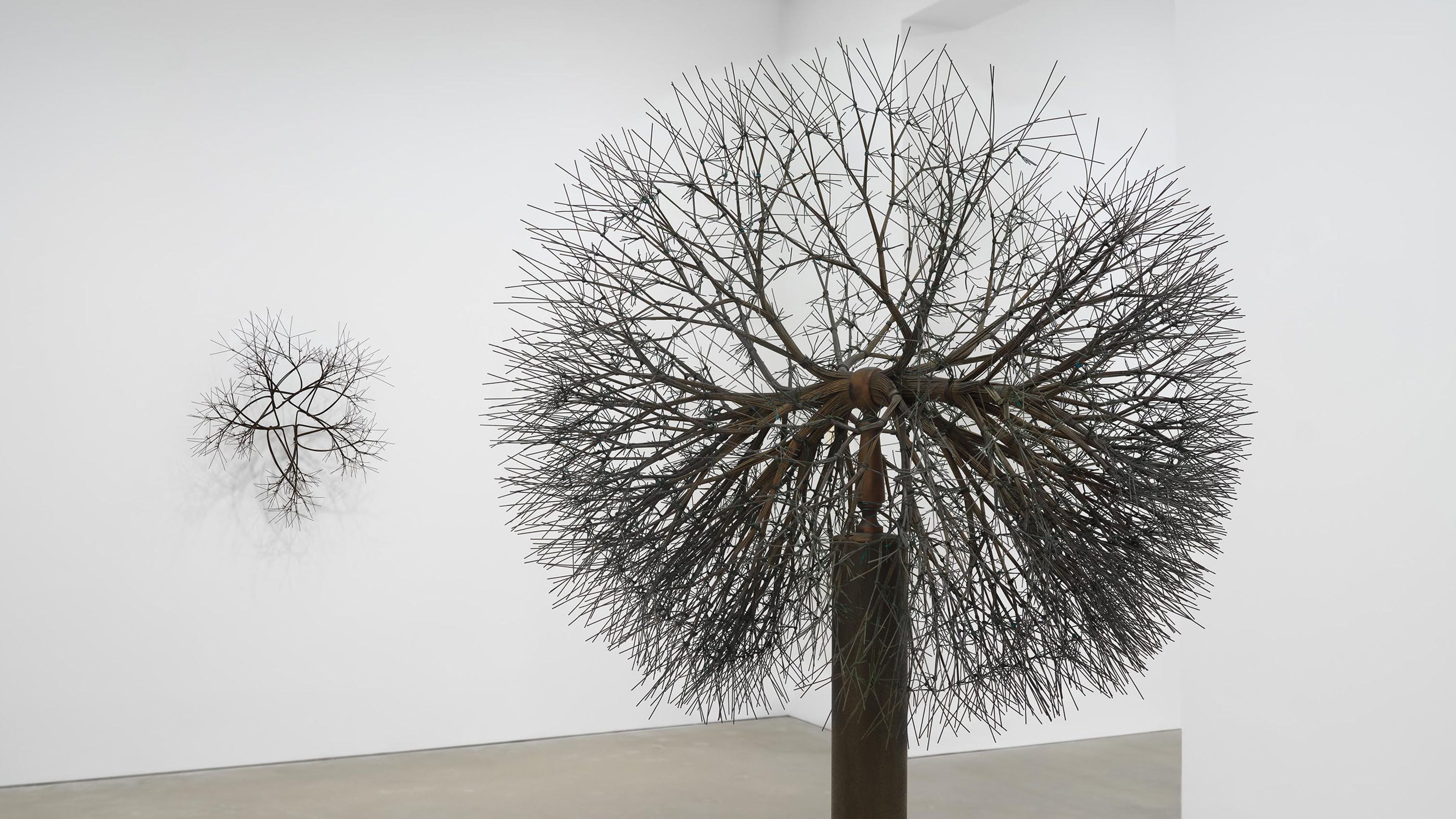
Installation view, Ruth Asawa: Doing Is Living, David Zwirner, Hong Kong, 2024–2025. Artworks © 2024 Ruth Asawa Lanier, Inc./Artists Rights Society (ARS), New York
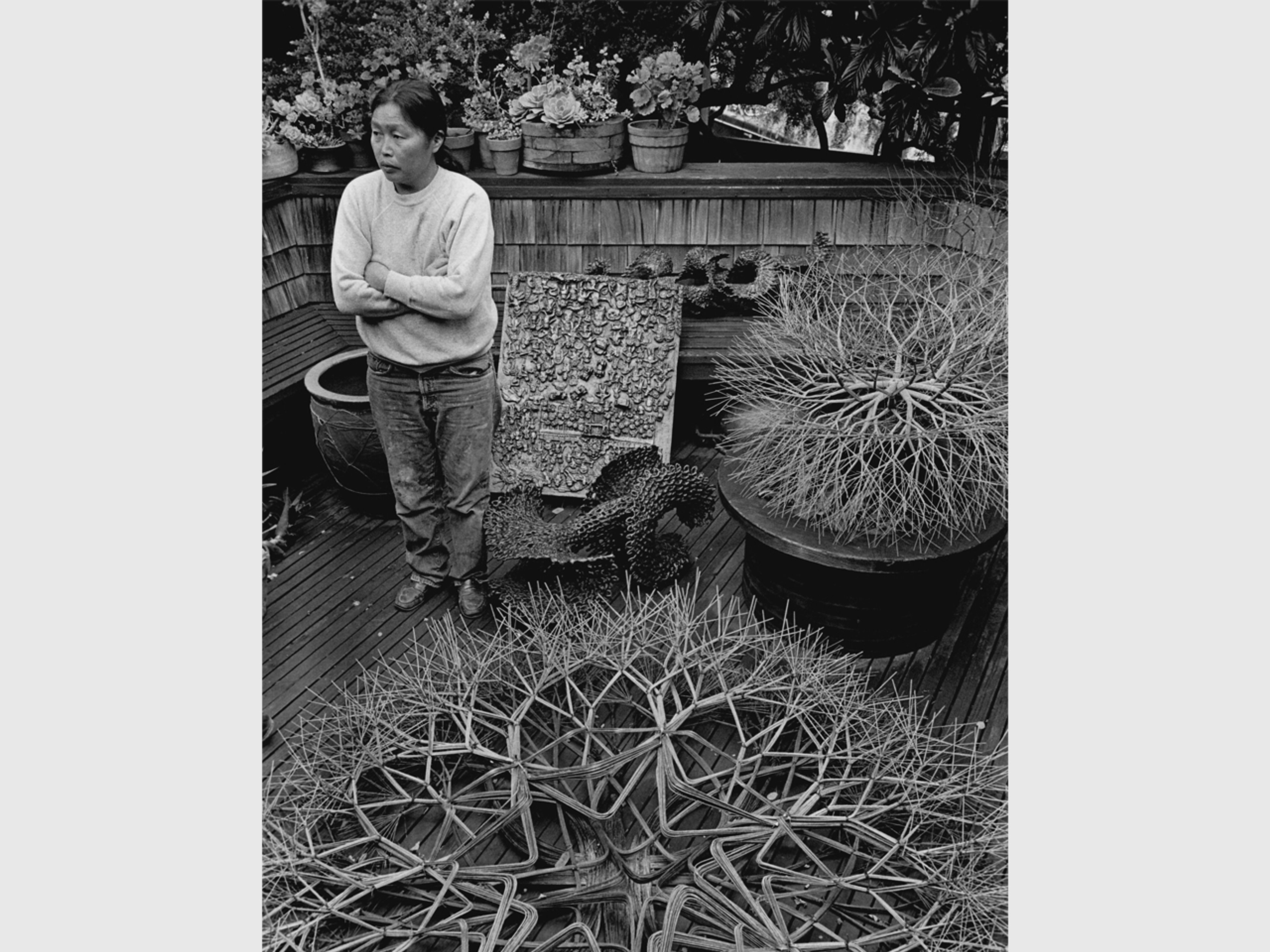
Ruth Asawa with tied-wire sculptures on the deck of her San Francisco home, c. 1975. Photo by Laurence Cuneo. Artwork © 2024 Ruth Asawa Lanier, Inc./Artists Rights Society (ARS), New York
Asawa often made her looped-wire sculptures while sitting at her kitchen table or looking after her children. Her home in San Francisco’s Noe Valley had an nineteen-foot vaulted ceiling where looped- and tied-wire sculptures hung from the rafters.
As her daughter, Aiko Cuneo, once remarked, “We always saw her making art, it was part of her everyday existence. I never thought of her making art as a separate activity. To us, she wasn’t working. We didn’t have to be quiet so she could concentrate. Her art-making space was always in our house.”
“Techniques are simple to learn. Digesting them and making something that represents you will take a lifetime. Learn to draw, build, work with materials. Above everything be curious, learn all you can, and take a lifetime doing it.”
—Ruth Asawa
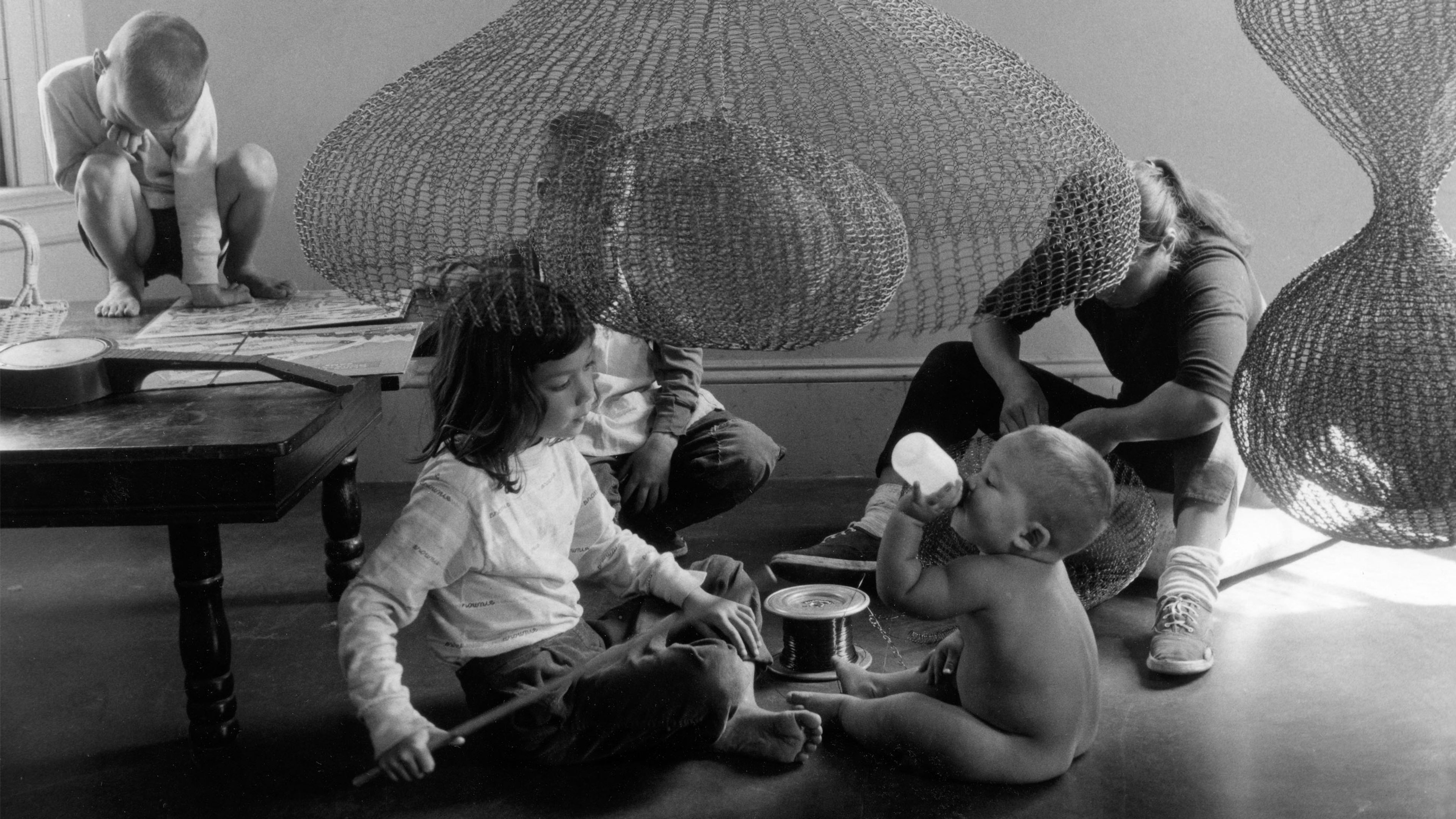
Ruth Asawa and her children, 1957. Photograph © Imogen Cunningham Trust. Artwork © 2024 Ruth Asawa Lanier, Inc./Artists Rights Society (ARS), New York

Inquire about works by Ruth Asawa

